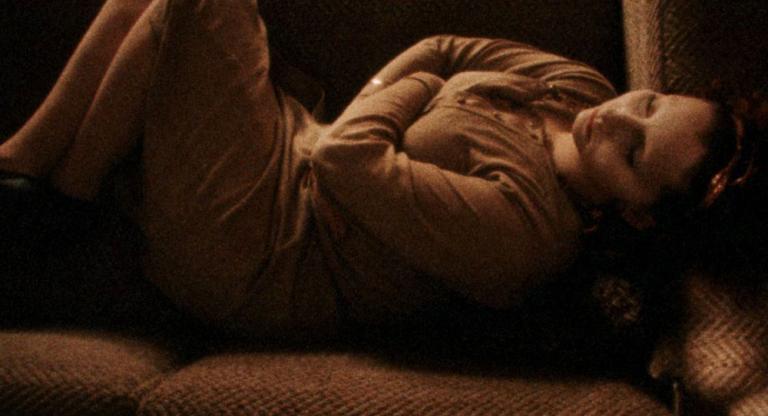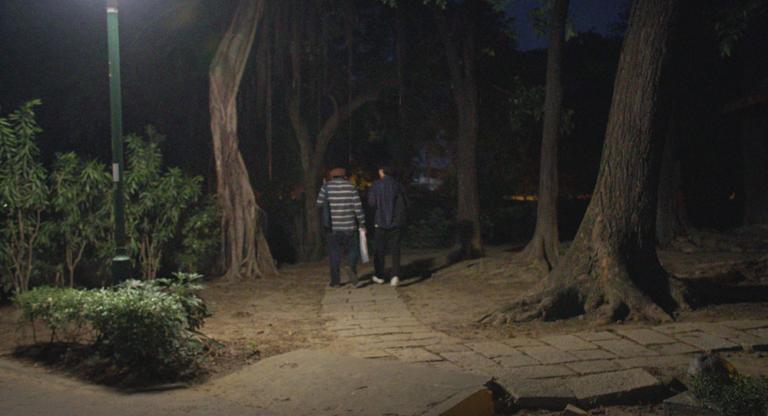
The first shot of the film gives a sense of its general bearing: A patient, steady tilt up a rusted signpost in the middle of the woods. At the top, a hand-painted message is translated "According to legend, here stood Grandmother's house." Nearby are corrugated metal cut-outs of the hunter, the wolf, the grandmother, and Little Red Riding Hood, the martyred reminder that evil may come in familiar clothing.
After this brief prologue, Heimat Is a Space in Time proceeds in black and white for three-and-a-half hours, spanning two world wars and four generations of German intellectuals. Thomas Heise's own family archives are paired with cinematographer Stefan Neuberger's present-day footage. The documents include school assignments and identification papers, résumés and recipes, letters of entreaty and betrothal, diary entries, children's drawings, and much else besides. For the non-German-speaking audience, the eye must learn to flit between the impressive images and the dense narration, translated in subtitles. Fortunately, Heise's voice is a compelling guide. Emptied of all dramatic affect, it achieves an easy proximity with those for whom he speaks.
In one sequence, we scan for half an hour a scroll of names and addresses, most appearing alongside ominous blue checkmarks. Meanwhile, Heise reads a series of letters from his great-grandparents in 1942 as they await their deportation to the Polish camps. "Life is becoming all the more beautiful," Elsa Hirschhorn writes to her daughter, "Today we had very good fried potatoes." Here and elsewhere, the silence of the receiving party is striking and terrible. That only one set of letters survives emphasizes one of Heise's central theses: a confusion of fragments is often more truthful than the coherence of narrative.
Neuberger's camera returns frequently to the labor camp at Zerbst, where Wolfgang and Hans Heise – as punishment for their “miscegenated” births – were made to build a Nazi airstrip. The old barracks still stand, now with huge wind turbines looming above them. The film's other visual fixation is with railways of all kinds, from rapid transit to freight. The trains invoke the human cargo of the Holocaust, but also provide a metaphor for the family's pervasive fatalism. Late one night, a brakeman cuts cargo cars away from each other so they can be sorted by the switch into the yard.
"The film is about people who cannot escape their history," Heise has said. After the fall of the Third Reich came the bifurcation of Germany and the implementation of a Communist regime in the East. One sequence pairs a declassified Stasi neighborhood surveillance report on the Heise household with images of a swan prodding at some rotting fish carcass. The liberal capitalism to follow would be too late to torment the Heises for long – besides Thomas, the surviving members are in hospitals and nursing homes by the film's end. Instead, we find its victims on a morning U-bahn platform, wearing Yankees caps and military fatigues, glancing nervously into the camera.
Heimat is a Space in Time is available to stream on OVID.tv


